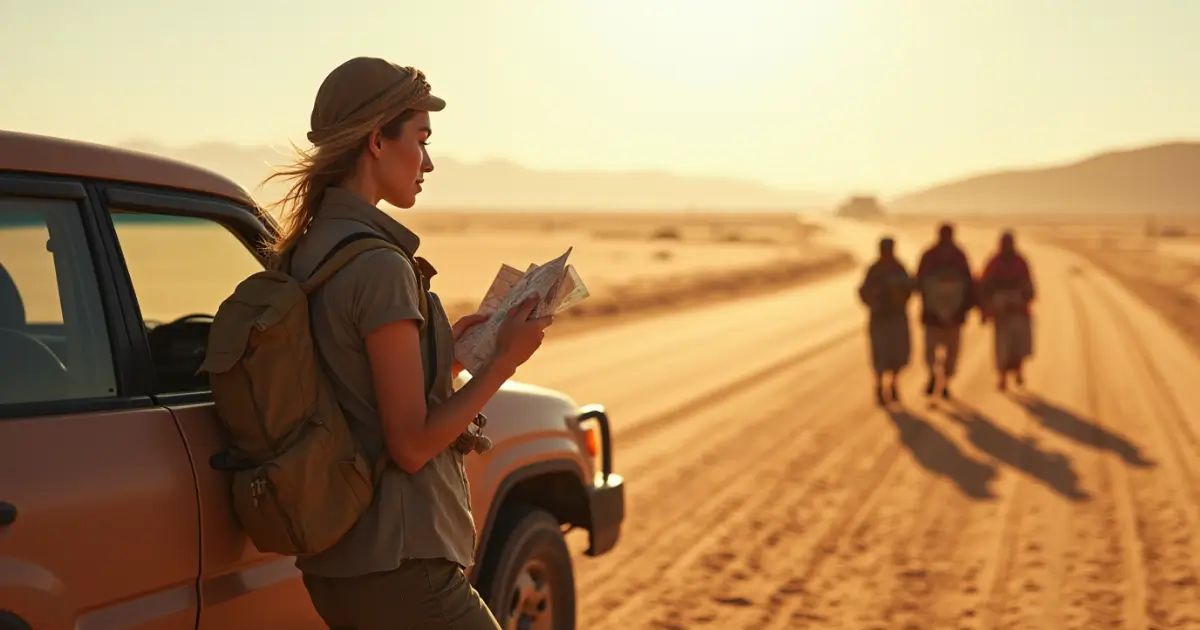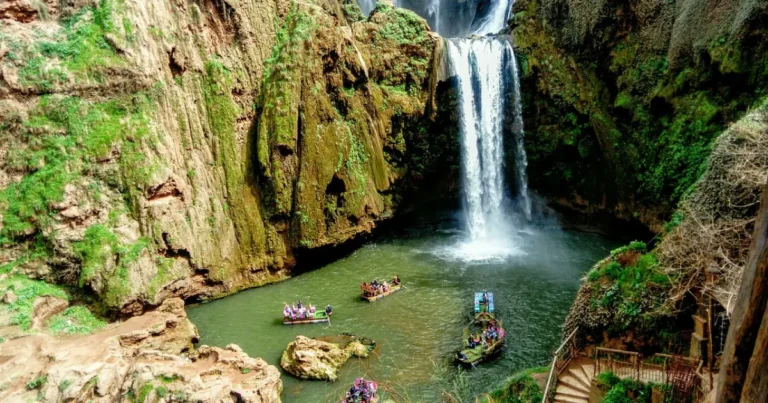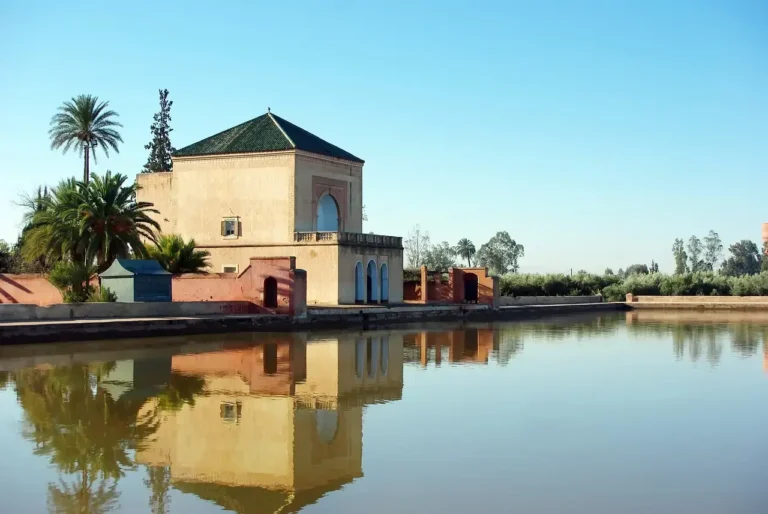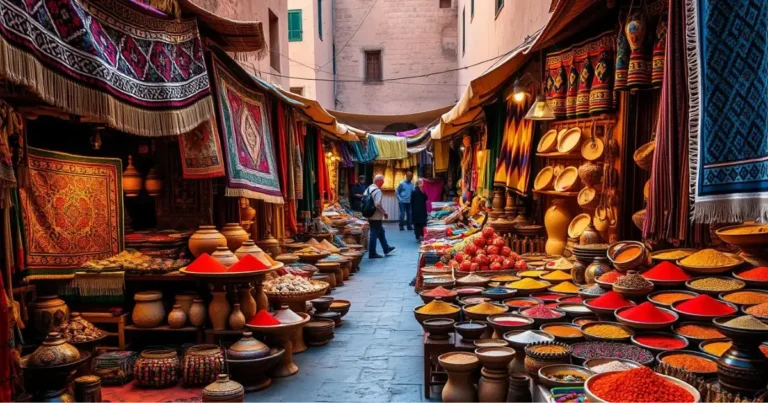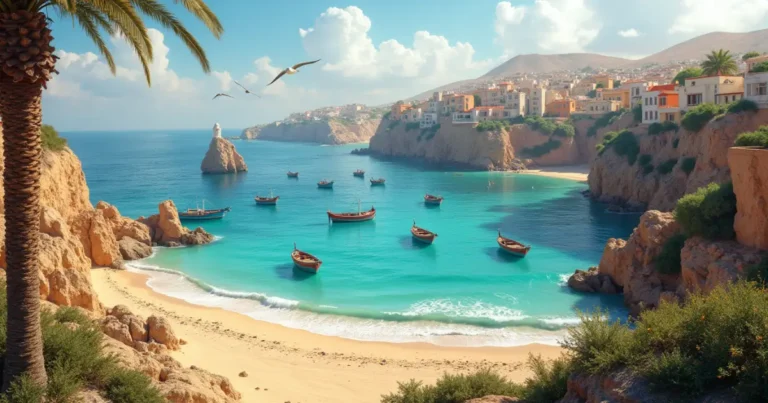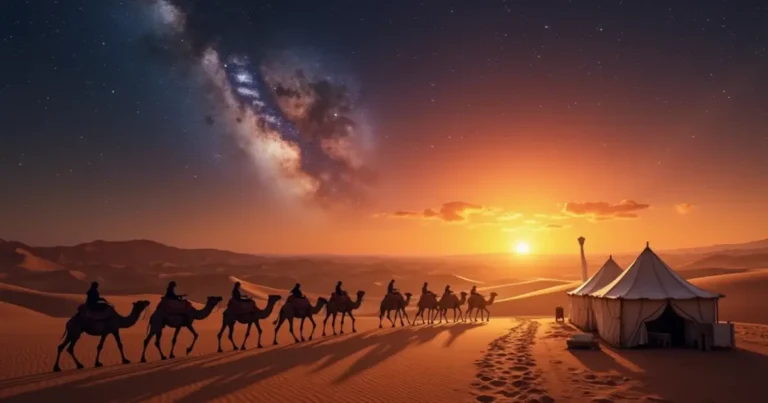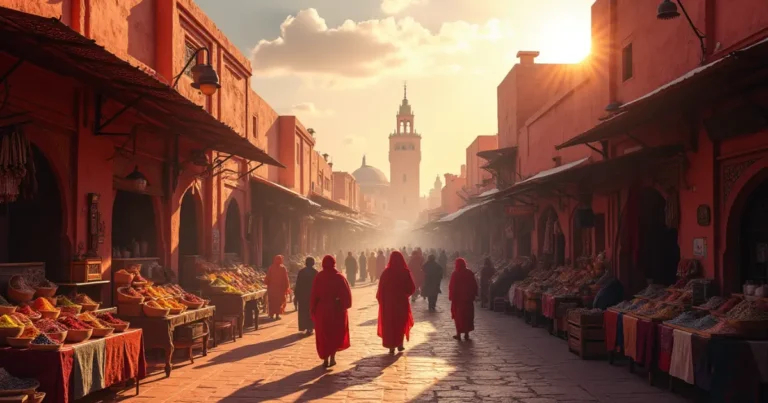The Ultimate 13-Day solo female road trip in Morocco
Last updated: March 9, 2025
Table of Contents
As solo female road trip Morocco captivates with its vibrant colors, intricate architecture, bustling medinas, and warm hospitality. But as a solo female traveler considering a Moroccan adventure, you likely have questions: Is it safe? Should I rent a car or hire a driver? Can I explore cities alone? Do I need a guide?
If these questions are swirling in your mind, you’re in the right place. I recently returned from a remarkable two-week solo journey through Morocco that exceeded all my expectations. From the enchanting blue streets of Chefchaouen to the labyrinthine medina of Fes, the imperial grandeur of Meknes, the coastal modernity of Casablanca, and the sensory explosion that is Marrakech—my experience was nothing short of magical.
In this comprehensive guide, I’ll share every detail of my 13-day Morocco road trip itinerary, along with practical advice on transportation, safety tips specifically for female solo travelers, and recommendations for accommodations and dining that will enhance your Moroccan adventure.
Morocco Road Trip Itinerary: 13 Days / 13 Nights
Route Overview
The Essentials
- Duration: 13 days / 13 nights
- Total Driving Distance: 869 kilometers (approximately 12 hours 15 minutes)
- Starting Point: Tangier Airport
- Ending Point: Marrakech Airport
- Best Time to Visit: I traveled in late March/early April when the weather was perfect—warm days and cool evenings
- Target Audience: This itinerary is ideal for travelers who appreciate architectural wonders, authentic cultural experiences, leisurely medina explorations, and comfortable stays in traditional riads
Itinerary Highlights
- Chefchaouen: Morocco’s mesmerizing blue pearl – 3 nights
- Fes: An authentic Moroccan maze of history and culture – 3 nights
- Meknes: The underrated imperial city – 1 night
- Casablanca: Home to the breathtaking Hassan II Mosque – 1 night
- Marrakech: The vibrant pink city that captivates all senses – 5 nights
City-by-City Guide
Chefchaouen: Morocco’s Blue Pearl (Days 1-3)
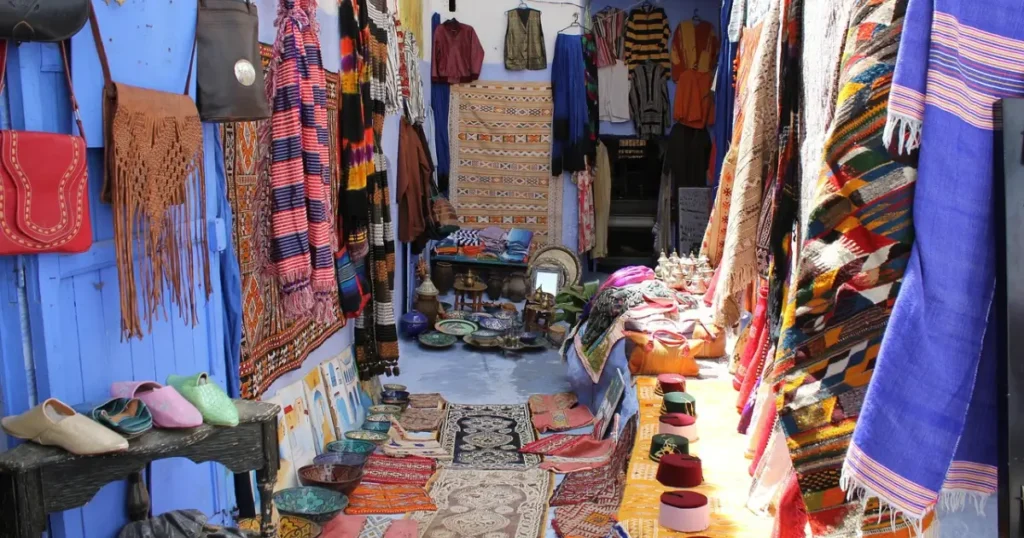
After landing in Tangier, I immediately headed to Chefchaouen, the perfect introduction to Morocco. Nestled in the Rif Mountains, this town is famous for its striking blue-washed buildings and relaxed atmosphere—an ideal place to ease into Moroccan culture without the intensity of larger cities.
What to See and Do
- Early Morning Photography: The blue streets are at their most magical before 10:00 am when the light is soft and the streets are relatively empty. I recommend rising early at least once during your stay to capture the town’s ethereal beauty without crowds.
- Get Pleasantly Lost: The joy of Chefchaouen lies in wandering without a specific destination. Each turn reveals new shades of blue, charming doorways, and picturesque corners. The medina is small enough that you’ll never truly be lost.
- Plaza Uta el-Hammam: The main square is the heart of Chefchaouen, surrounded by cafés and restaurants. It’s an excellent spot for people-watching while sipping fresh orange juice (a Moroccan specialty you’ll find everywhere).
- Kasbah Museum: Located in the main square, this 15th-century fortress offers historical context about the region and stunning rooftop views of the city.
- Spanish Mosque Sunset Hike: The 45-minute moderate hike to the abandoned Spanish Mosque (Mosquée Bouzâafar) rewards with panoramic views of Chefchaouen aglow in the sunset light. I felt completely safe doing this hike alone, though I made sure to return before dark.
- Shop for Handcrafts: Chefchaouen is known for its woolen garments, woven blankets, and natural soaps. The shopping experience here is more relaxed than in other Moroccan cities, with less aggressive haggling.
Where to Eat
- Café Clock: Part of a small chain that appears in several Moroccan cities, this café offers traditional Moroccan dishes with creative twists. Their storytelling nights and cooking classes are worth checking out.
- Marisco Twins: A local favorite serving authentic tagines, couscous, and harira (traditional soup). The portions are generous and prices reasonable.
- Restaurant Lampe Magique Casa Aladdin: The food is good, but the real draw is the rooftop terrace overlooking Place Outa El Hamam, especially beautiful at sunset.
- Assaada: Their breakfast spread with fresh bread, multiple jams, honey, olive oil, and Moroccan pancakes (msemen) gave me energy for a full day of exploration.
Where to Stay
I chose Dar Zambra, a traditional Moroccan guesthouse with breathtaking rooftop views of the surrounding mountains. The rooms feature intricate tilework and carved wooden details, offering an authentic experience without sacrificing comfort. The hospitable owner provided invaluable local tips and even arranged for my transportation to Fes.
Fes: An Authentic Moroccan Maze (Days 4-6)
After the tranquility of Chefchaouen, Fes presents a thrilling contrast with its UNESCO-protected medina—the world’s largest car-free urban area and a living museum of medieval Islamic life.
What to See and Do
- Hire a Local Guide: Unlike Chefchaouen, Fes medina is truly labyrinthine with over 9,000 narrow streets and alleys. I highly recommend hiring an official guide (identifiable by their badge) for at least your first day. My guide not only prevented me from getting hopelessly lost but also provided fascinating historical and cultural context.
- Gates of the Royal Palace: While the palace itself isn’t open to visitors, the magnificent brass doors of Dar al-Makhzen are a must-see photo opportunity.
- Bab Bou Jeloud: Known as the “Blue Gate,” this ornate entrance serves as the main gateway to the old medina.
- Rainbow Street: This colorful stretch filled with dyed fabrics and textiles creates a vibrant pathway through the medina.
- Madrasa Bou Inania: This 14th-century theological college showcases the pinnacle of Marinid architecture, with intricate zellige tilework, carved cedar, and ornate stucco.
- Chouara Tanneries: One of Fes’s most iconic sights (and smells!). Watch as tanners use techniques unchanged since medieval times to prepare and dye leather. Shops surrounding the tanneries offer mint leaves to combat the strong odor.
- Al Attarine Madrasa: Another stunning example of Islamic architecture, smaller but equally exquisite as Bou Inania.
- Mosque and University Karaouiyne: Founded in 859, it’s one of the world’s oldest continuously operating universities. Non-Muslims can only view it from outside, but even the exterior is impressive.
- Fondouk el-Nejjarine: This former merchants’ inn now houses a fascinating woodcraft museum, topped with a lovely rooftop café.
- Cherratine Madrasa: Less visited than other madrasas but equally beautiful.
- Fes Souk: Navigate the sensory overload of the souks, where you’ll find everything from spices and ceramics to leather goods and metalwork.
Where to Eat
- Fassie Délecie: Perfect for lunch, offering traditional Moroccan cuisine in a casual setting.
- Palais de Fes Dar Tazi: Come for the sunset rooftop views, stay for the delicious dinner. Watching the sun go down over the ancient medina while enjoying a mint tea is an unforgettable experience.
- Café Clock: Similar to its Chefchaouen counterpart but with its own character. Try their signature camel burger if you’re feeling adventurous.
- Restaurant Asmae: Hidden in the medina, this family-run establishment serves home-style cooking that offered some of the most authentic flavors I experienced.
Where to Stay
I split my time between two riads to experience different aspects of Fes:
- Riad El Amine: Located just outside the medina, this riad offers easier access for arrivals and departures with luggage. The serene courtyard with its fountain provided a welcome retreat after navigating the bustling medina.
- Riad Rcif & Spa: Situated deep within the medina, this gorgeous property offered a more immersive experience. While challenging to find initially, its central location made exploring convenient once settled in. The hammam spa treatment here was the perfect way to rejuvenate after days of walking.
Meknes: The Imperial City (Day 7)
Often overshadowed by its more famous neighbors, Meknes deserves attention as one of Morocco’s four imperial cities. With just one day here, I discovered an architectural treasure trove without the crowds of other major destinations.
What to See and Do
- Medersa Bou Inania: Not to be confused with the one in Fes, this religious school offers another beautiful example of Moroccan craftsmanship.
- Lahdim Square: The vibrant main square connects the old medina with the imperial city area. Street performers, food vendors, and locals create an authentic atmosphere.
- Bab Mansour: Widely considered Morocco’s most impressive gate, this monumental entrance features intricate mosaic work and imposing columns.
- Moulay Ismail Mausoleum: One of the few religious sites open to non-Muslims, this tomb of Morocco’s powerful sultan is a serene space showcasing exquisite artisanship.
- Kara Prison: This underground prison constructed to hold Christian sailors creates an eerie contrast to the grandeur above ground.
- Royal Stables: These enormous structures once housed 12,000 horses in individual stalls with dedicated grooms. The scale is truly impressive.
Where to Eat
- Pavillon des Idrissides: Located on Lahdim Square, this restaurant offers traditional Moroccan cuisine with views of the bustling plaza.
- Riad Ma Bohème: This hidden gem requires knocking on a nondescript door for entry, but rewards with a multi-course dinner in a magical courtyard setting.
Where to Stay
I chose Riad Ritaj, a beautifully restored traditional home with an imperial-looking ground floor centered around a peaceful courtyard. The rooftop terrace provided lovely views over the city’s ancient walls and minarets.
Casablanca: Home to Morocco’s Most Impressive Mosque (Day 8)

While Casablanca is primarily Morocco’s business hub rather than a tourist destination, it deserves a stop for one spectacular reason: the Hassan II Mosque.
What to See and Do
- Hassan II Mosque: This architectural masterpiece is one of the few mosques in Morocco open to non-Muslim visitors (through guided tours only). Built partially over the Atlantic Ocean, its minaret stands 210 meters tall, making it the world’s second-tallest religious building. The craftsmanship is breathtaking—hand-carved stone and wood, intricate mosaics, and a glass floor in the main hall revealing the sea below.
- Sunset Experience: Watching the sunset behind the mosque from the adjacent plaza created one of the most memorable moments of my trip. Note that tripods aren’t allowed in this area.
- La Corniche: If time permits, a stroll along this beachfront promenade offers a glimpse into contemporary Moroccan life.
Where to Eat
- Le Melliber: Located at Melliber Appart Hotel, this restaurant offers a fusion of Moroccan and international cuisine. After days of traditional tagines, I appreciated the variety.
- Rick’s Café: While touristy (inspired by the fictional café in “Casablanca”), the 1930s atmosphere and live piano music make for an entertaining evening.
Where to Stay
I chose Melliber Appart Hotel primarily for its convenient location near the Hassan II Mosque. The spacious rooms and modern amenities were a welcome change of pace from the more traditional accommodations elsewhere on my journey.
Marrakech: The Vibrant Pink City (Days 9-13)
Marrakech serves as the grand finale of this Moroccan journey—a sensory explosion of color, sound, scent, and flavors that encapsulates everything that makes Morocco magical.
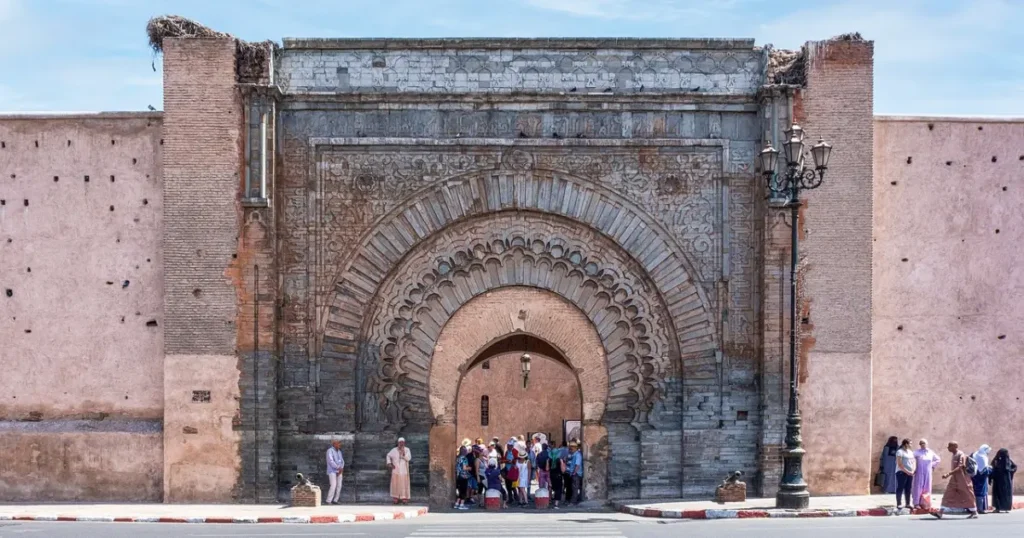
What to See and Do
- Bahia Palace: This 19th-century palace showcases the height of Moroccan architectural artistry with its painted cedar ceilings, marble courtyards, and intricate stucco.
- El Badi Palace: In fascinating contrast to Bahia, these impressive ruins of a once-magnificent palace offer insight into Morocco’s golden age.
- Dar Si Said: This museum of Moroccan crafts is housed in a stunning traditional residence.
- Saadian Tombs: Discovered in 1917 after being sealed for centuries, these ornate tombs of the Saadian dynasty showcase incredibly preserved cedar and stucco work.
- Kasbah Area: This older, less touristy neighborhood offers a glimpse into local life just steps from major attractions.
- Mosque Koutoubia: Marrakech’s iconic minaret towers over the city. While non-Muslims cannot enter, the surrounding gardens provide perfect photo opportunities.
- Jardin Majorelle: Once owned by Yves Saint Laurent, these meticulously designed botanical gardens center around a striking cobalt blue villa. An oasis of calm amid Marrakech’s intensity.
- Jardin Secret: A recently restored historic riad with Islamic gardens that provide another peaceful retreat from the medina’s hustle.
- Souk Shopping: Marrakech’s souks are legendary for their variety and vibrancy. Each section specializes in different crafts—from leather and metalwork to textiles and pottery.
- Place des Epices: The “Spice Square” dazzles with pyramids of colorful spices, dried fruits, and medicinal herbs.
- Jemaa El Fna: Marrakech’s main square transforms throughout the day, from a relatively calm marketplace to an evening carnival of food stalls, musicians, storytellers, and performers. It’s the beating heart of the city and unmissable despite its touristy nature.
Where to Eat
- Le Bougainvillier: Offering both Moroccan classics and wood-fired pizzas, this restaurant provides a comfortable break when you need variety.
- Café des Epices: This multi-level café on the spice square offers simple but tasty fare with excellent people-watching opportunities.
- Café Snack Rahba Kedima: Traditional Moroccan food served on a rooftop terrace overlooking the spice market.
- Nomad: This contemporary rooftop restaurant serves modern interpretations of Moroccan cuisine, with exceptional vegetarian options.
- Café de France: Dating back to 1936, this institution offers prime views of Jemaa el Fna. The food is secondary to the experience of watching the square come alive at sunset.
- Café Clock: Completing my trio of visits to this chain, the Marrakech branch is known for its camel burger and cultural events.
Where to Stay
I divided my five nights between two exceptional riads:
- L’Oriental Medina Riad & Spa: This intimate property enchants with its orange blossom-scented courtyards and small but refreshing plunge pool. The staff arranged a cooking class where I learned to prepare authentic Moroccan dishes.
- Riad Palais Sebban: More palatial than a typical riad, this property features multiple courtyards, a larger swimming pool, and a spectacular rooftop terrace. The lavish breakfast spread was the perfect start to each day.
Transportation: Why I Hired a Driver Instead of Renting a Car
One of my biggest pre-trip decisions was whether to self-drive or hire transportation. I ultimately chose to hire a driver for the following reasons:
Why I Decided Against Self-Driving
- Unwanted Attention: As a blonde woman traveling alone, driving myself would have drawn additional attention at every stop.
- Police Checkpoints: Morocco has numerous police checkpoints along major routes, and tourists can be targeted for minor infractions.
- Road Conditions: The journey from Tangier to Chefchaouen to Fes involves considerable distances without highways, often on winding mountain roads.
- Driving Culture: Moroccan driving style differs significantly from what I’m accustomed to, with different unwritten rules and expectations.
- City Driving: Navigating the chaotic traffic in cities like Casablanca and finding parking near medinas would have added unnecessary stress.
- Limited Need: Within each city, I walked or used taxis, making a rental car unnecessary for most of my trip.
Benefits of Hiring a Driver
- Door-to-Door Service: My driver delivered me directly to each riad entrance, eliminating the hassle of navigating to accommodations with luggage.
- Relaxation: I could fully enjoy the scenic routes, take photos, or even nap between destinations rather than focusing on driving.
- Local Insight: My driver shared fascinating stories, pointed out sites I would have missed, and offered cultural context throughout the journey.
- No Police Concerns: We sailed through checkpoints without the scrutiny a foreign driver might receive.
- Flexibility: I could request stops at scenic viewpoints or interesting villages that weren’t on the original itinerary.
- Connectivity: My driver provided WiFi in the vehicle, allowing me to share photos and stay connected between destinations.
Finding a driver was straightforward—I researched online and booked in advance, though many riads can also arrange transportation if you prefer to organize it upon arrival. While more expensive than renting a car, the convenience and peace of mind were well worth the investment, particularly as a solo female traveler.
Safety Tips for Female Solo Travelers in Morocco
Morocco was significantly safer than many Western perceptions suggest, but as with any solo travel, awareness and preparation enhance the experience:
Essential Preparations
- Buy a Local SIM Card: Immediately upon arrival, I purchased a local SIM card at the airport. Having reliable internet access for maps, translation, and emergency communication proved invaluable.
- Dress Appropriately: Respecting local customs means avoiding revealing clothing. I packed loose pants, below-knee skirts, and tops that covered my shoulders and chest. A light scarf was useful for additional coverage when needed, though wearing a headscarf is not required.
Common Situations to Navigate
- Scam Awareness: In medinas, be skeptical of anyone claiming streets are closed or offering unsolicited “help” that leads to shops or demands payment. While most Moroccans are genuinely helpful, tourist areas attract opportunists.
- Animal Handlers: In market squares, especially Jemaa El Fna, men with monkeys or snakes may place them on you for photos, then demand payment. Maintain distance unless you’re prepared to pay.
- Taxi Protocol: Always agree on a price before entering a taxi. In larger cities, insist on using the meter or confirm a fixed price to your destination.
- Photography Etiquette: Always ask permission before photographing people, especially women. Some may request a small payment, while others may decline entirely.
Practical Safety Measures
- Secure Your Belongings: Use a crossbody bag with secure closures. I avoided displaying expensive jewelry or electronics unnecessarily.
- Watch for Motorcycles: Particularly in Marrakech, motorcycles zoom through narrow medina streets. Stay alert and walk predictably.
- Firm but Kind Responses: Catcalling occurs but is generally harmless. A confident “La, shukran” (No, thank you) and continued walking addressed most situations. For persistent attention, entering a shop or café usually ended the interaction.
- Trust Your Instincts: As in any destination, if a situation feels uncomfortable, remove yourself. I found Moroccan women incredibly helpful when I needed assistance.
Final Thoughts
My two-week journey through Morocco as a solo female traveler exceeded all expectations. The country’s rich culture, stunning architecture, delicious cuisine, and warm hospitality created memories I’ll cherish forever. While planning and awareness are essential, don’t let unfounded fears prevent you from experiencing this extraordinary destination.
Morocco offers a perfect balance of adventure and accessibility for solo travelers, with infrastructure that supports independent exploration alongside cultural experiences that challenge and inspire. By approaching the journey with respect, curiosity, and common sense, female solo travelers can discover the magic of Morocco safely and joyfully.
Have you traveled to Morocco alone or are you planning a trip? I’d love to hear your experiences or answer any questions in the comments below!

